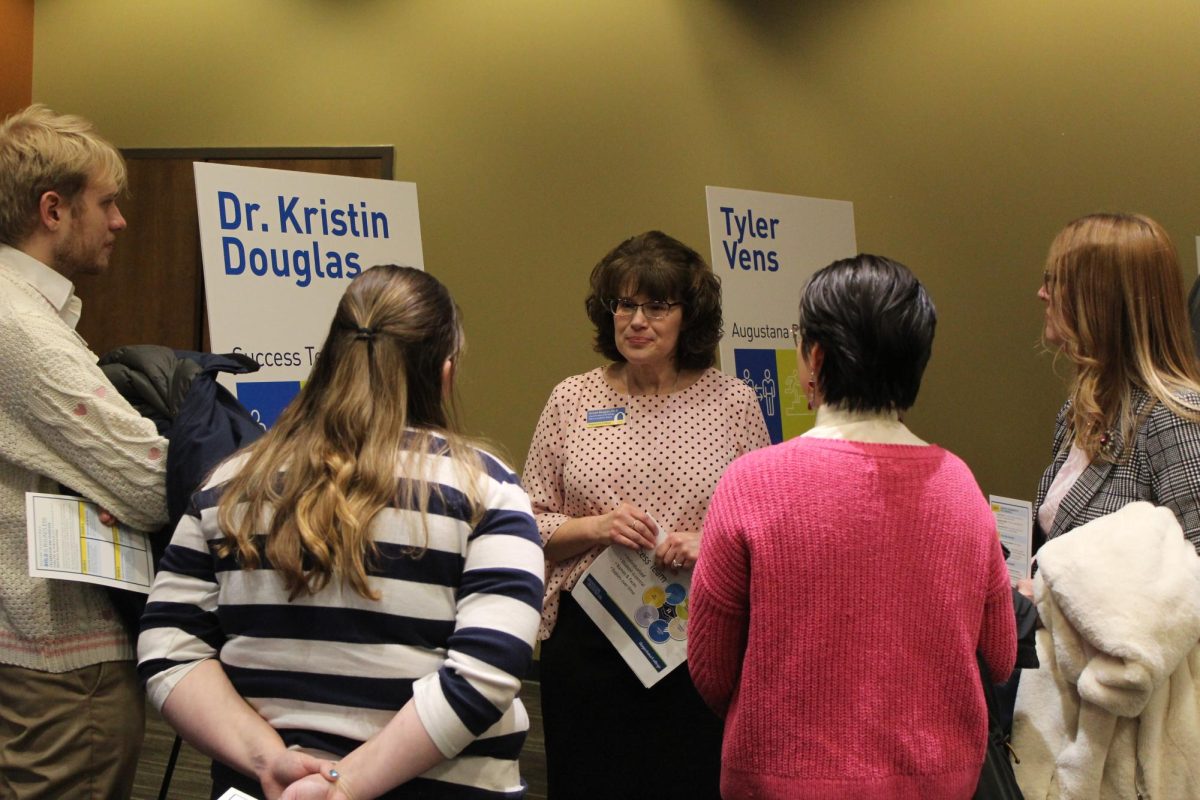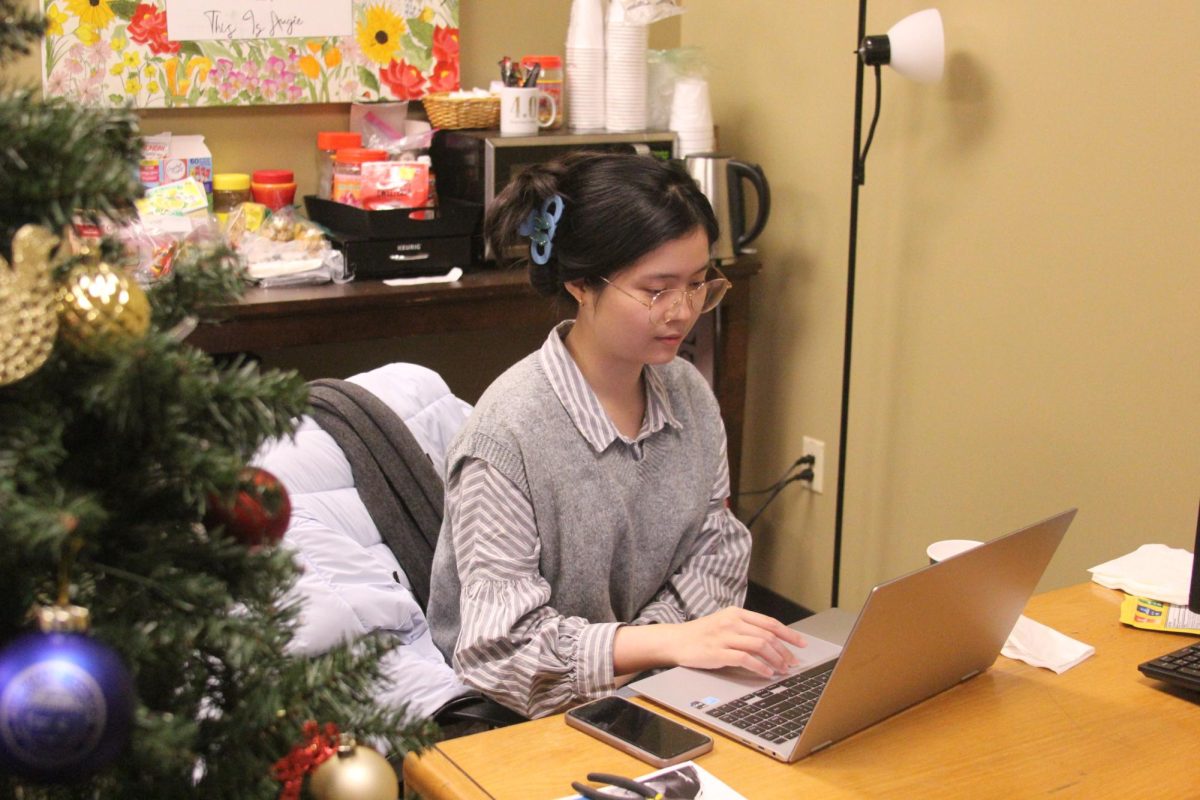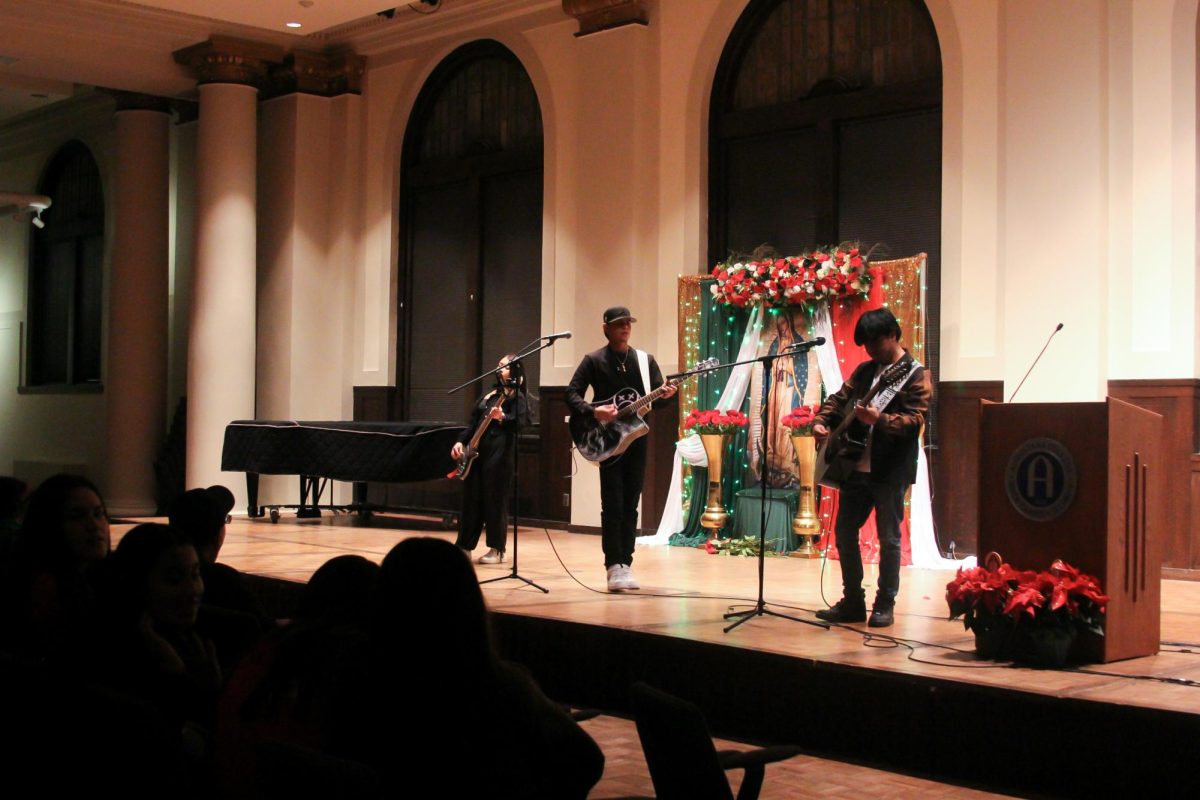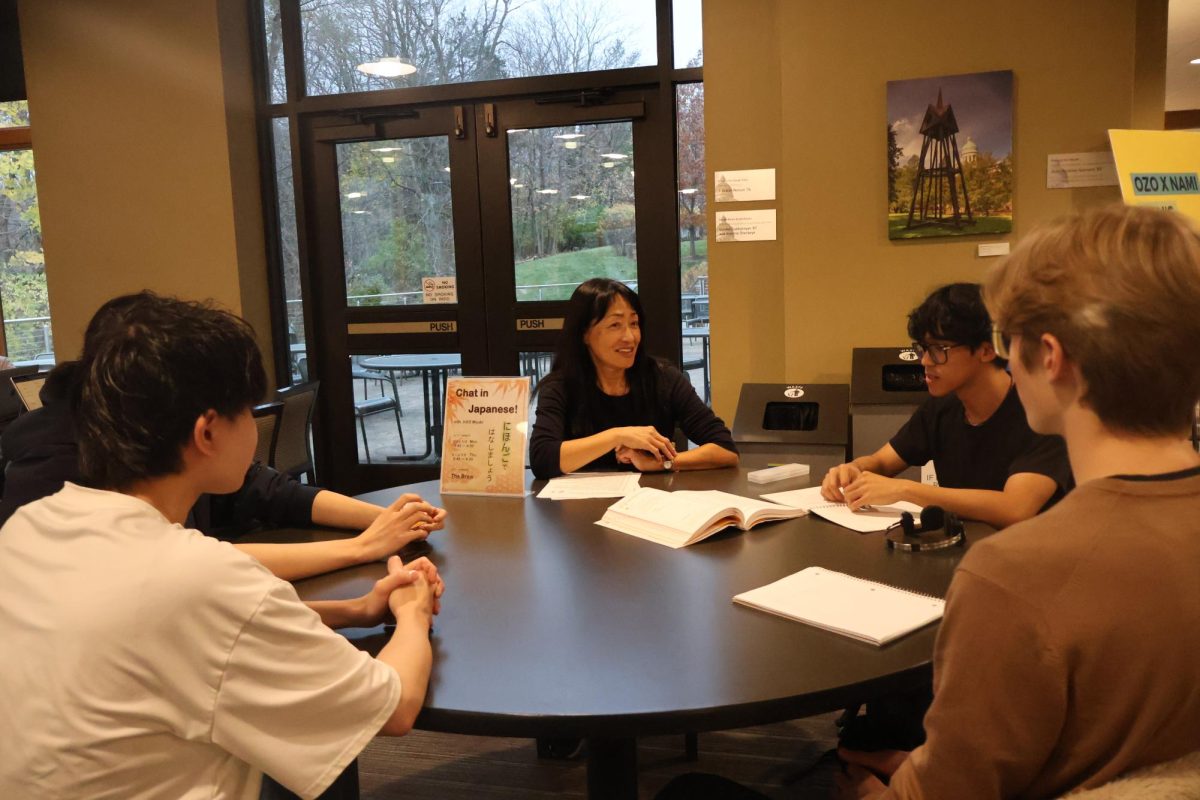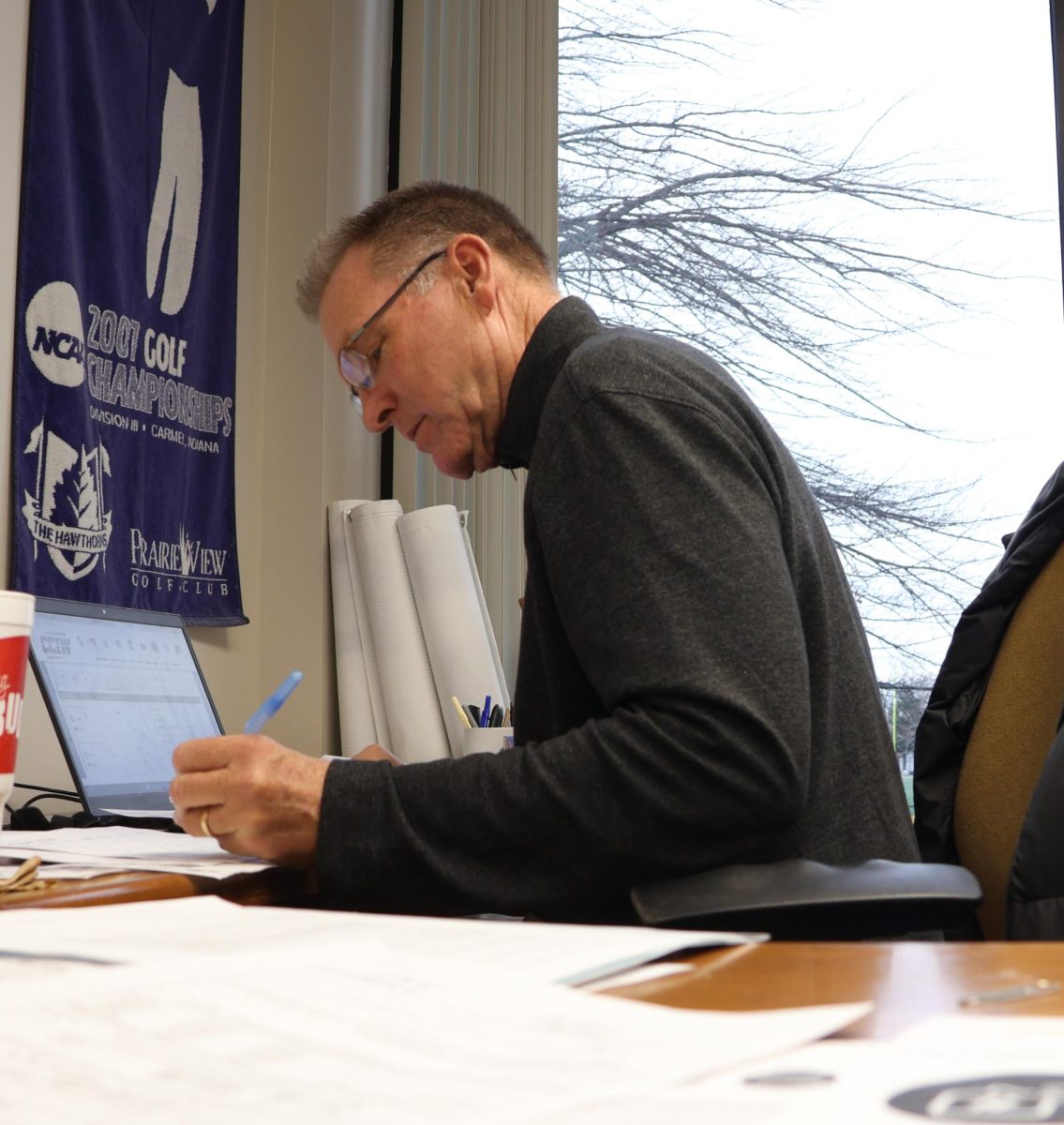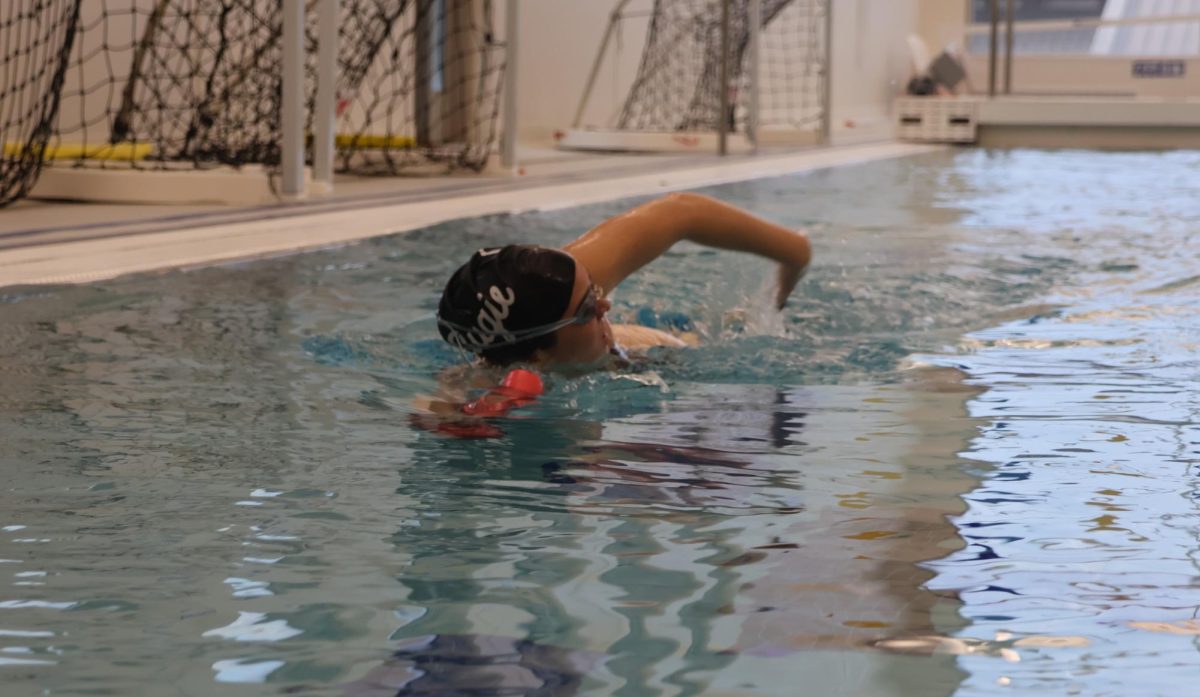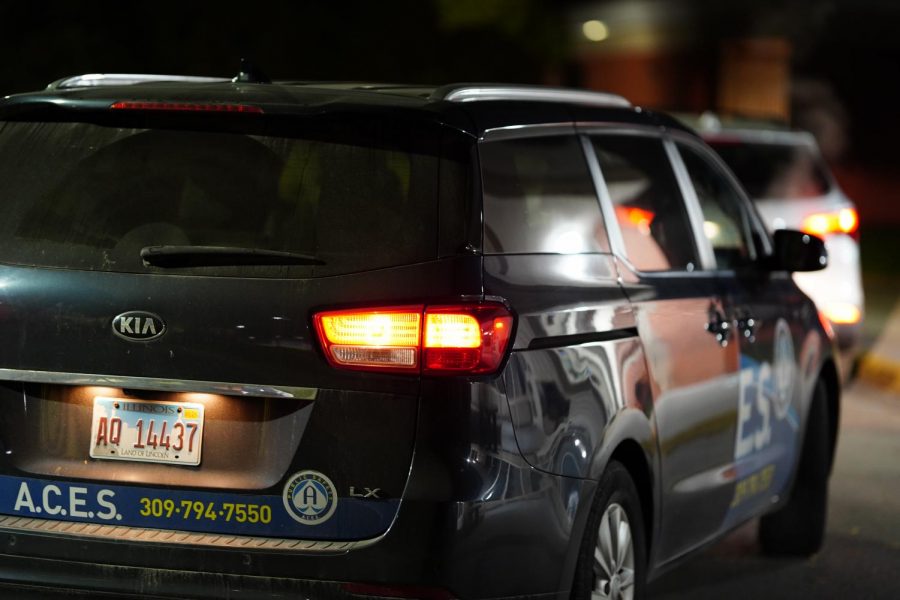ACES extended wait times create uncertainty
Given a new ride request, the ACES van begins to pull away from the Westerlin lot.
November 10, 2021
The Augustana College Express Service (ACES) has experienced many issues this year with long wait times, unreliability, and low staffing. Students felt apprehension about continuing to use this service, yet students workers ask the Augustana community for understanding when it comes to improving this system.
ACES is a student-managed and student-staffed van shuttle service that provides free transportation for students on campus. Many students, especially those without vehicles, rely on ACES to move around campus.
Although ACES advertises itself as safe and reliable, some students have experienced issues with ACES and its reliability.
One student complaint, according to first-year Kayla Napoli, is the time between ordering a ride and the arrival of the van. Napoli said she had a poor experience with ACES due to its unpredictable arrival times.
“One time my friends and I were waiting and [the ACES app] said the ride was there. We went outside to go look for the ride but it wasn’t there. So we looked again and our ride was rescheduled. They just reschedule it. And then we looked again and they just outright canceled it,” Napoli said.
First-year Hope Washington, former ACES driver, addressed the long wait time and ride cancellation.
“The reason for the very long wait time is that we only have two cars. Also, we have to wait five to 10 minutes for the rider to come out. We’re not going to just leave if somebody is late to get to the car. We wait for them and it pushes back the wait time for the next rider,” Washington said.
Washington said both ACES and the riders can work together to improve the experience. If students were to request rides on the ACES app rather than by phone, students would be able to track the van as it drives to its destination. In addition, students should be able to arrive on time for their ride to quicken the arrival time for the next ride. Lastly, if ACES had more vans, they would be able to provide more rides at once.
Junior Cassidy Wiltjer, director of ACES, said there are a lot of matters that need to be taken into account when it comes to improving the ACES system.
“It would be great to have a third van; however, it has to do with the budget that the school has for the program and public safety. But I know that we have a stable budget for two vans,” Wiltjer said.
Wiltjer also said there was a labor shortage within ACES, partly due to the pandemic that impacted the work force last year.
“There was a lot that we had to do to get the program back up and running again. Right now we only have just over 25 employees, which is pretty small for us. In a normal year we would have somewhere between 35 and 50,” Wiltjer said.
Another factor relating to the labor shortage is the lack of awareness surrounding ACES.
“I think some of it has to do with the fact that not everybody really knows what ACES is yet. Also, due to the unique schedule that we have, a lot of students find it difficult to fit ACES into their schedule,” Wiltjer said.
Regardless of the setbacks that ACES is facing, the program commits to serve the students.
“At the end of the day, ACES is a safe way for students to go around campus. We should give our dispatchers and the whole ACES program a little bit of leeway. The van will come for you, even if it takes up to 30 minutes,” Washington said.

